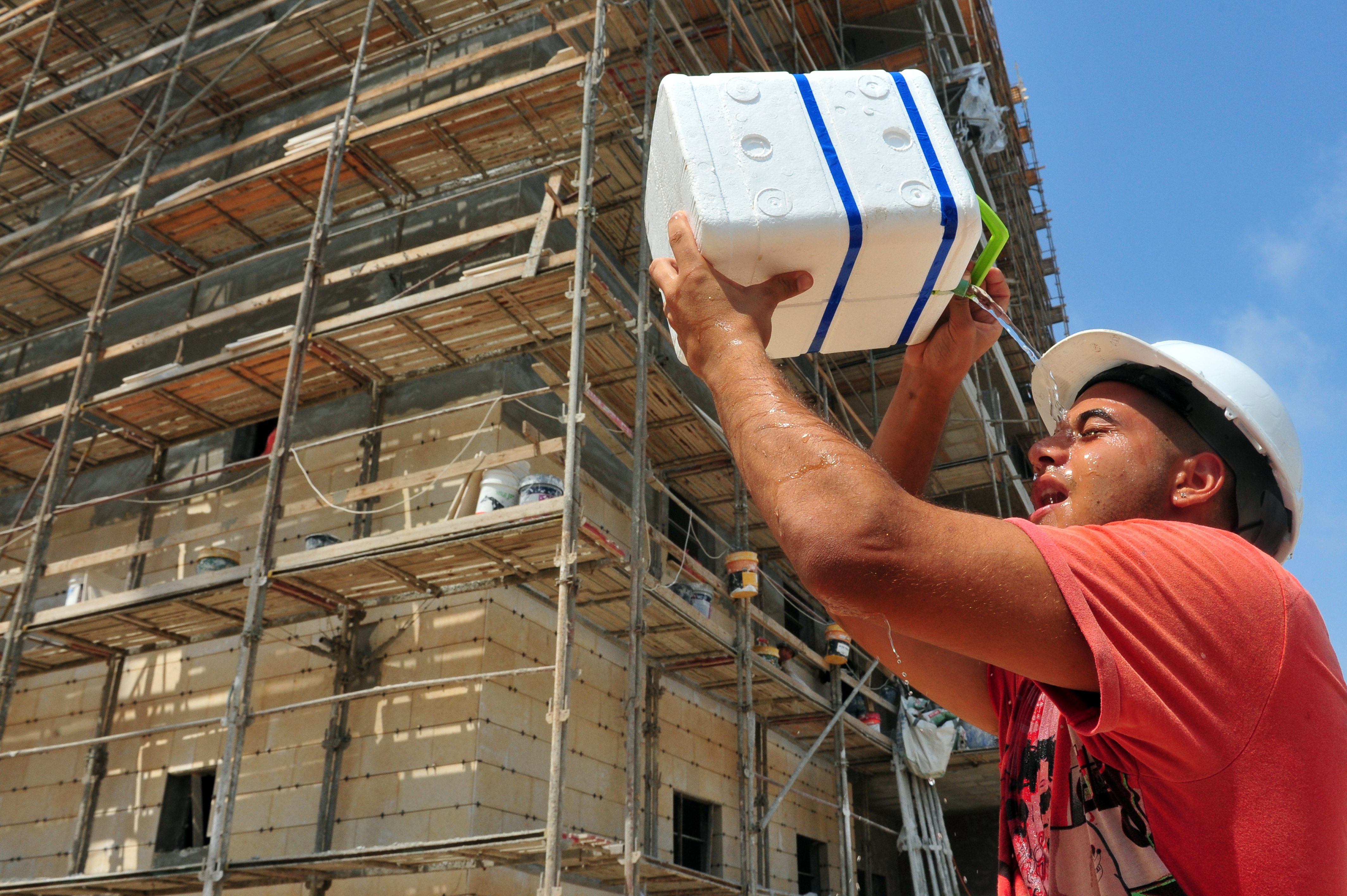Hot summer days aren’t all fun and games. For outdoor workers who are exposed to extreme conditions, summer’s heat presents significant hazards such as sunburn, dehydration and heat stroke. The combination of heat and dehydration can pose a particularly serious health threat during summer for Utah concrete and construction workers. Knowing how to work safely outdoors in hot weather is critical when it comes to preventing heat illness.
Heat Cramps, Heat Exhaustion, Heat Stroke—What’s the Difference?
Heat illness can occur in various degrees, most notably with heat cramps, heat exhaustion and heat stroke.
Heat cramps are muscle pains caused by loss of fluids and electrolytes during sweating. Outdoor workers who experience heat cramps should rest and replace lost fluid by drinking water and/or sports drinks.
Heat exhaustion is a serious heat-related illness that causes dizziness, nausea, extreme thirst, weakness, confusion and elevated body temperature. Outdoor workers with heat exhaustion should be moved to a cooler location, given water to drink and cold compresses applied to their head, face and neck. If symptoms persist, medical services are necessary.
Heat stroke is the most extreme form of heat illness and happens when the body’s temperature-regulating systems fails. Signs of heat stroke include:
- Confusion
- Loss of consciousness
- Seizures
Heat stroke is a medical emergency that can be fatal and requires immediate medical attention.
How To Avoid Heat-Related Illnesses
Occupational hazards that can contribute to heat illnesses include high temperature, direct sun exposure, extreme physical exertion, heavy lifting, dark clothing and low fluid consumption. Protect yourself in hot weather with these tips from OSHA and the American Red Cross for working safely outdoors.
- Stay hydrated – drink small amounts of water frequently, even if you don’t feel thirsty. The average person has 2.6 million sweat glands that activate when the body needs to cool down. While sweating is good for the body, it can also lead to dehydration. The general rule of thumb is 8 ounces of water every 15 to 20 minutes. Prevention is key when it comes to minimizing risk of dehydration.
- Dress for the weather –loose-fitting, light-colored, breathable clothing (such as cotton) are good choices for outdoor workers in hot weather. Avoid dark colors that absorb the sun’s rays. A wide-brim hat can help shade the head, face and neck. Be aware that protective gear such as respirators or coveralls can increase heat stress on the body.
- Adjust work schedules – establish and enforce work/rest schedules to control heat exposure and allow workers to recover. Take into account the level of physical exertion and type of protective equipment being used and schedule heavy tasks earlier in the day when it’s cooler.
- Take short, frequent breaks – rest in a shady or air-conditioned location. OSHA advises employers to provide workers with water and regular rest periods in a cool recovery area.
- Check the weather forecast– be aware of both the temperature and the heat index so you can dress accordingly.
- Protect yourself against the sun – long-term exposure to the sun not only causes skin damage but increases the risk of skin cancer. For outdoor workers, sunscreen with a minimum SPF of 30 and both UVA and UVB protection is recommended. Even on a cloudy day, 30% to 50% of the sun’s rays reach the skin, so sunscreen should be liberally applied every two hours, or more if perspiring.
- Avoid drinking alcohol or too much caffeine – these types of beverages dehydrate rather than hydrate, which can lead to heat-related illnesses. If you know you’re scheduled to be out in the hot sun, stick to water.
- Use a buddy system when working in excessive heat – learn to recognize the signs of heat illness and act immediately if you recognize signs in yourself or a co-worker.
- Start slow – take some time to get acclimated to working in the heat before you go as hard as you normally would. If possible, prepare physically by exercising in higher temps so that your body gets used to the heat.
- Get trained in first aid – learn how to treat heat-related emergencies and what to do in an emergency. Learn the signs of heat-related illnesses so that you can help your co-workers. Keep an eye on those around you so that you can provide assistance when needed.
- Download the OSHA-NIOSH Heat Safety Tool – this app can help you determine what types of activities are appropriate based on the temperature throughout the day. Its real-time heat index can be made specific to your location.
Utah heat can be especially harmful for those who work outdoors in direct sunlight and high temperatures. Concrete workers and employers should take steps to avoid potential heat hazards and stay safe when working outdoors in hot weather. Taking the above precautions can help outdoor workers beat the heat and work safely.
Get out of the midday heat – visit your local Intermountain Concrete Specialties store.
